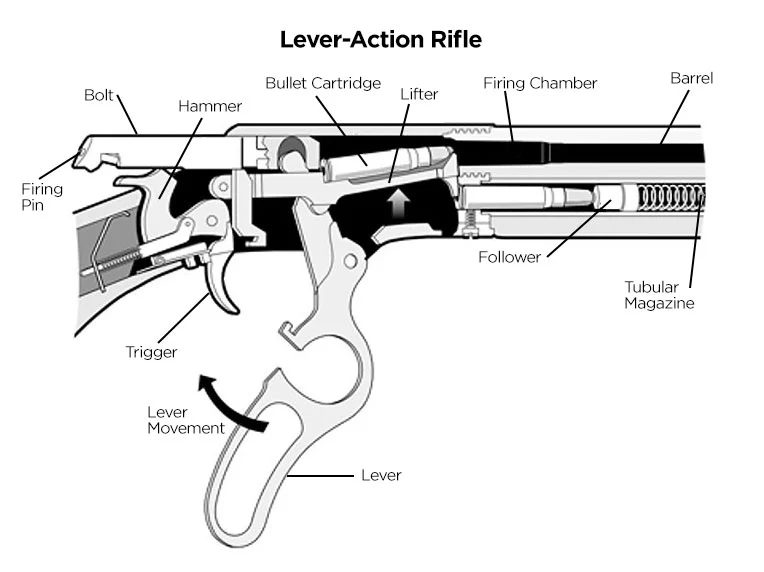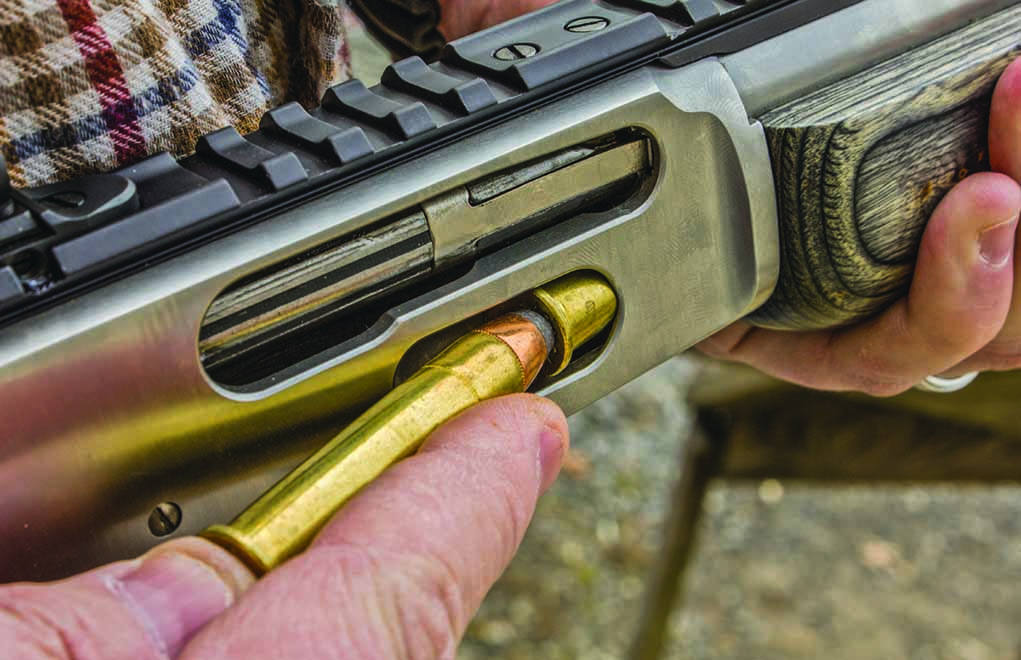Introduction
Lever action rifles are not only a staple of American firearm heritage but also exemplify a unique mechanical design that has intrigued both enthusiasts and engineers for decades. Renowned for their rapid-fire capability and smooth operation, these rifles combine traditional aesthetics with functional ingenuity. This article provides a detailed exploration of the mechanics and operation of lever action rifles, elucidating how they function and why they remain popular among shooters.
The Basics of Lever Action Mechanism
Fundamental Components
The operation of a lever action rifle revolves around several key components:
- Lever: The lever, which doubles as the trigger guard, is the primary operating handle used to cycle rounds.
- Bolt: The bolt seals the breech end of the barrel during the firing process and extracts spent casings after firing.
- Magazine: Most lever action rifles utilize a tubular magazine under the barrel, though some models may use box or rotary magazines.
The Cycle of Operation
Here’s a step-by-step breakdown of the cycle of operation in a lever action rifle:
- Loading: Rounds are loaded into the magazine, typically located beneath the barrel.
- Chambering: Pulling the lever down and away from the stock opens the bolt, ejects any spent cartridge, and moves a new round from the magazine into the path of the bolt.
- Locking: Returning the lever to its original position slides the bolt forward, chambering the new round and locking it into place for firing.
- Firing: The rifle is fired by pulling the trigger, which releases the hammer to strike the firing pin.
- Ejecting: Operating the lever again after firing extracts and ejects the spent cartridge, repeating the cycle.

Detailed Mechanics of Lever Action Rifles
Lever and Linkage System
The lever in a lever action rifle is connected to a series of linkages and a rotating bolt. These components work together to perform multiple actions: cocking the hammer, extracting the spent cartridge, and feeding a new round into the chamber. The efficiency and simplicity of the lever system allow for quick successive shots, which was revolutionary in the era of its invention.
The Role of the Ejector and Extractor
Key to the smooth operation of lever action rifles are the ejector and extractor:
- Extractor: This component grips the rim of the cartridge, pulling it from the chamber once fired.
- Ejector: As the lever opens the bolt, the ejector forcefully removes the spent casing from the rifle, clearing the way for the next round.
Hammer and Firing Pin Mechanism
The firing mechanism in a lever action rifle involves a hammer striking a firing pin, which in turn detonates the primer in the cartridge:
- Hammer: Typically exposed on older models, the hammer must be fully cocked either by the action of the lever or manually by the shooter.
- Firing Pin: The hammer strikes the firing pin, which then hits the primer to ignite the gunpowder in the cartridge.
Loading and Reloading
Tubular Magazines
Most lever action rifles use a tubular magazine that runs parallel to the barrel, holding anywhere from 5 to 14 rounds, depending on the model and caliber:
- Loading Process: Rounds are loaded one at a time into the magazine through a loading gate located on the side of the receiver or directly into the open end of the magazine tube.
Box and Rotary Magazines
Some modern lever action rifles may feature box or rotary magazines, which can offer quicker reloading and the ability to use spitzer (pointed) bullets, which are typically not suitable for tubular magazines due to safety concerns.

Modern Innovations and Adaptations
Lever Action in Modern Firearms
While retaining their classic appeal, lever action rifles have been adapted for modern use with enhancements such as:
- Synthetic Stocks: For durability and weather resistance.
- Advanced Optics: Including scopes and red-dot sights for improved accuracy.
- Materials: Use of lighter, stronger materials that reduce weight without compromising the structural integrity.
Uses Beyond Hunting
Beyond traditional hunting, lever action rifles are used in sport shooting, including cowboy action shooting competitions, and even in tactical applications where rapid, reliable firing is crucial.
Conclusion
The enduring popularity of lever action rifles is a testament to their distinctive mechanical design and historical significance. Combining traditional operation with modern enhancements, these rifles offer a unique blend of past and present, appealing to a wide range of shooting enthusiasts across generations. Whether used for hunting, sport, or collection, lever action rifles continue to fascinate and perform, maintaining their place in the pantheon of iconic firearms.
FAQs
-
Are lever action rifles safe to use with modern ammunition?
Yes, modern lever action rifles are designed to be safe with contemporary ammunition, including high-pressure loads, provided they are within the specifications for which the rifle is chambered.
-
Can lever action rifles be customized?
Yes, many lever action rifles can be customized with various accessories, including upgraded sights, stocks, and even different calibers, thanks to interchangeable barrels.
-
What is the best caliber for a lever action rifle for deer hunting?
The .30-30 Winchester is one of the most popular calibers for deer hunting with a lever action rifle, known for its effectiveness at moderate ranges.
-
How should I maintain my lever action rifle?
Regular cleaning and maintenance, including oiling the moving parts and checking the integrity of the ammunition and magazine, will keep a lever action rifle in optimal condition.
-
Are lever action rifles more accurate than bolt-action rifles?
While bolt-action rifles are generally regarded as more accurate due to their stability and design, modern lever action rifles with precision barrels and proper optics can achieve excellent accuracy for most practical uses.
